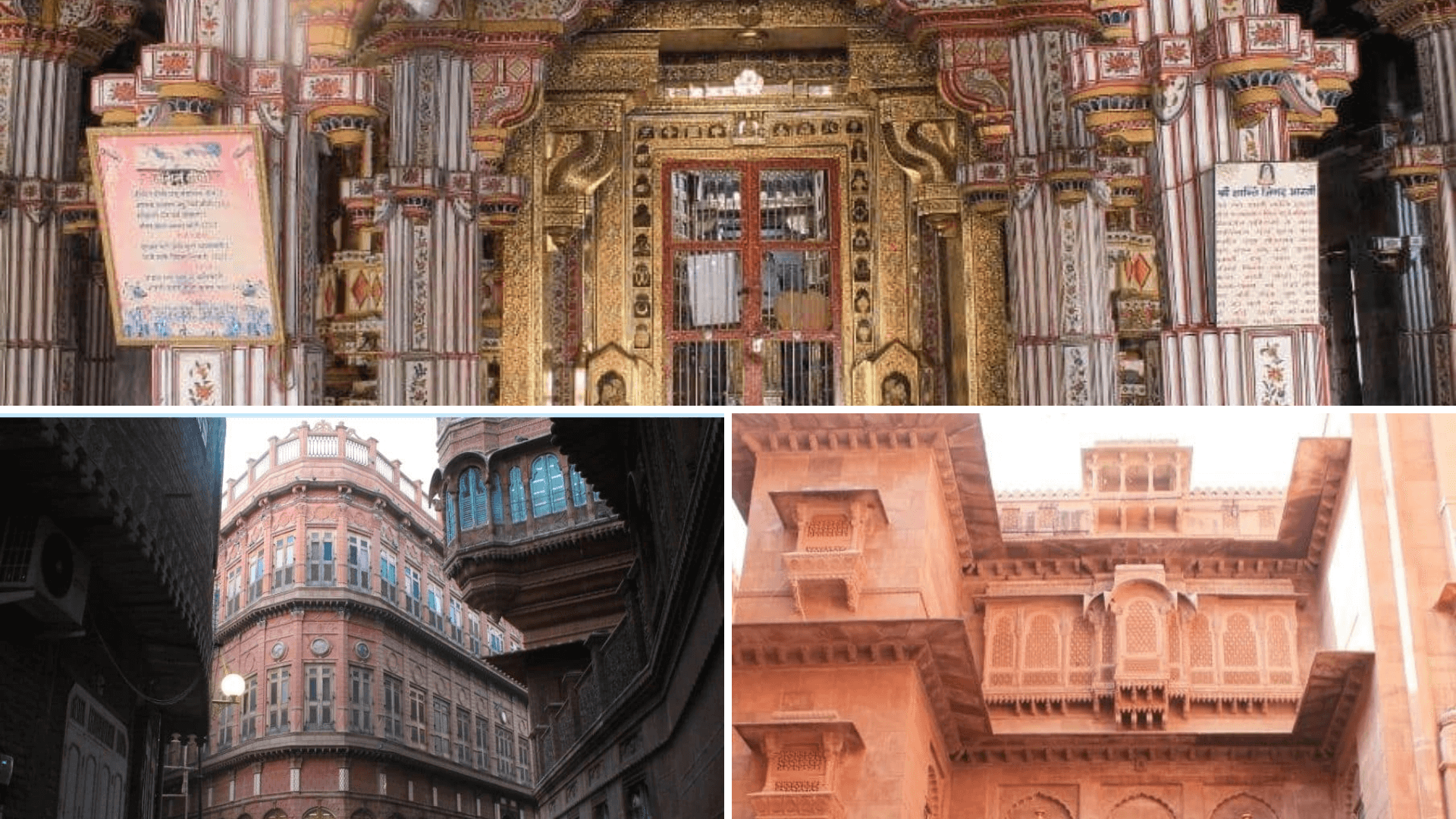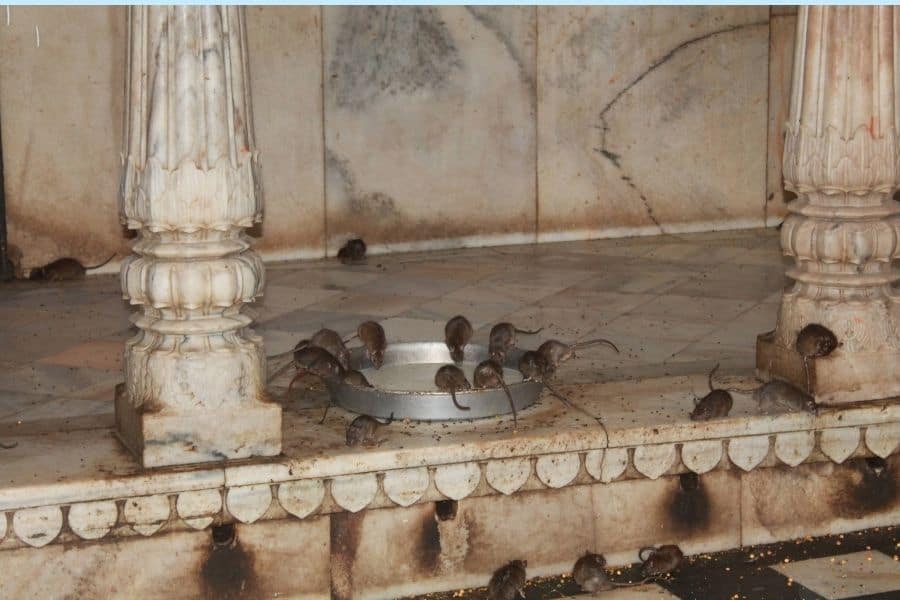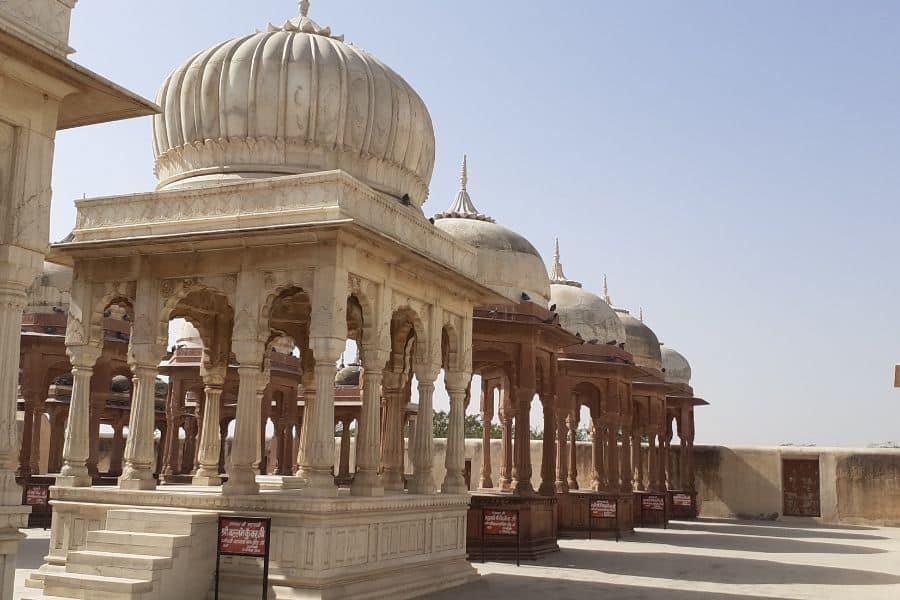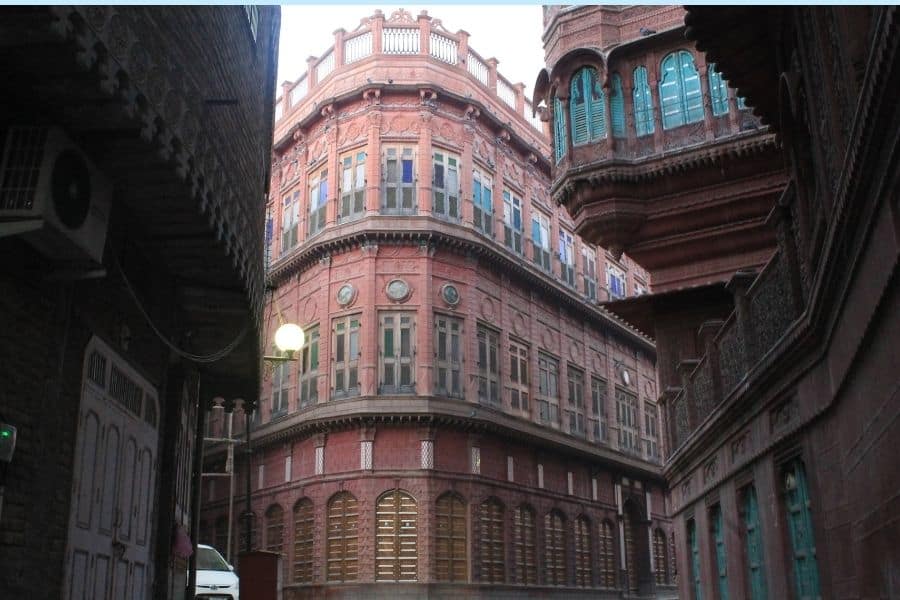Places to Visit in Bikaner

This is not a sponsored post!
Thinking of visiting Rajasthan? Which destinations come to your mind? Jaipur, Jodhpur, Jaisalmer, and Udaipur? Bikaner does get sidelined under these famous places to visit in Rajasthan. There are so many places to visit in Bikaner that it will charm you with the colors and rich heritage of Rajasthan with an advantage of fewer crowds.
There are so many unique things to do in Bikaner that you will fall in love with this Royal city.
Table of contents
Bikaner Tourist Places
We made a 3 day stay at Bikaner, and i must saym there are so many colorful Bikaner attractions.
Junagarh Fort
Bikaner Sightseeing is incomplete without visiting the Junagarh Fort. Also called the ‘Old Fort’, it echos the tales and valor of the Maharajas of Bikaner. The fort was built in 1594 by the 6th ruler of Bikaner, Raja Rai Singh, and was then called the ‘Chintamani Fort’. It is one of the few forts in Rajasthan that are not built on a hilltop.
Built in rose-red sandstone, it speaks of its grandeur and the art form used on the interiors. As you enter the courtyards and the various rooms, you are left awestruck with the intricate work done on the walls and ceilings.
There are museums and exhibits inside the fort with things used by the kings, including furniture, typewriter, crockery, ammunition, and even the World War I airplane.
Karni Mata Temple/Rat Temple
Wondering what is a Rat Temple? This unique temple in Deshnoke is about 30 km from Bikaner and is a must-visit for one of a kind experience. The temple is dedicated to Karni Mata and is thronged by devotees from all across, many of who come to see the rats.
There are more than 25,000 rats inside the temple complex running everywhere. Huge trays are kept inside the sanctum with milk and water in them for the rats to feed on. They are even offered sweets like laddoos and gram.
It is considered lucky if a rat passes by your feet and even good fortune if you spot a white rat. We were not able to spot a white rat though. And be mindful, if a rat gets killed by coming under the feet, you need to donate a silver rat to the temple.
It is believed that the descendants and people of this community are reincarnated as rats. The White rats are believed to be reincarnations of Karni Mata and her children.

Gajner Palace and Gajner Wildlife Sanctuary
Gajner Palace, once a hunting lodge of the kings, is converted into a hotel now. The palace is located by the shores of Gajner Lake and is beautifully constructed in red sandstone. If living close to nature away from the hustle-bustle sounds like you then this is the place to stay.
The palace also has a private Wildlife safari with animals like wild boars, gazelles, blackbucks, nilgai, jackals. There are Jeep Safaris that take through the sanctuary and up to the lake where these animals can be spotted drinking water. We were lucky to have even spotted Siberian Cranes.
Bhandasar Jain Temple
Seth Bhandasar Jain Temple in Bikaner is a treasure that was built around 1428, way before the Bikaner city was even founded. The temple is maintained by the Archaeological Survey of India and is known for the spectacular paintings on its walls and ceilings. I am sure you will keep gazing at the detailed and extraordinary work of the artists.
The temple was built by a merchant by the name Banda Shah and dedicated to the 5th Tirthankara (spiritual teacher of Jainism). Another special thing about this temple is that around 40,000 kg of ghee (clarified butter) was used in the foundation of the temple instead of water.

Laxmi Niwas Palace
Laxmi Palace is the palace of the King in the same complex as Lallgarh Palace. It has some beautiful and intricate carvings on the facade of the palace. Laxmi Niwas Palace has been converted into a luxury hotel.
Not only the palace is known for its beautiful designs and architecture, but the food especially the Rajasthani Thali is a must-try. There are vegetarian and non-vegetarian versions of the thali with traditional Rajasthani delicacies to savor. The Lal Maas (the red meat) is a popular non-vegetarian dish of Rajasthan enjoyed by the kings. The vegetarian include the Gatte ki Sabzi (dumplings made of gram flour dipped in gravy), sengari (beans local to Rajasthan), dal baati, and churma (baati is baked wheat balls to be dipped in dal and eaten, while Churma is crushed baati cooked in sugar and ghee).
We relished the thali but found it a little expensive at INR 1800 per thali.
Lalgarh Palace and Sri Sadul Museum
Lallgarh Palace was the luxurious Royal residence of the Maharaja Ganga Singh Ji and his family. In fact, there is a section of the complex where the royal family resides currently as well. Built in red sandstone, the palace is beautiful both from the exteriors and the interiors.
There are huge green lawns around the palace that are the best to sit and relax in the morning and the evenings with your cup of tea or coffee. There are swings where the kids can play and have a gala time. During mornings, even peacocks can be spotted.
Staying at the Lallgarh Palace lets you an insight into the galleries and walls adorned with royal pictures and collections. If royal treasure fascinates you then head over to Sri Sadul Museum across the palace. The museum has a personal collection of the royal family including costumes, jewelry, medals, crockery, decorative items, and even the Royal railway coach. The ticket to the museum costs INR 10, open from Mon- Saturday.
Royal Cenotaphs
This is one unique place to visit in Bikaner that is not visited by many. These are the cenotaphs or the Chhatris of the royal family members. Chhatri literally means an umbrella, that is due to the shape of the cenotaphs resemble an umbrella standing on four pillars.
These are tombs of all the kings, queens, and even royal children but without their remains. In Hindu culture, the bodies are lit on a pyre instead of burying. This culture of building the cenotaphs of the royals is a symbol of gratitude for their work that is prevalent in other parts of Rajasthan as well.
At Bikaner, there are some cenotaphs built in white marble and others in red sandstone.

Rampuria Havelis
The most Instagrammable spot in Bikaner is Rampuria Havelis. These are extravagant houses in the by lanes of the old city were built by the Rampurias, business families of Bikaner. These are built of red sandstone with intricate carvings on the facade and colorful wooden windows.
The Rampuria Havelis are a heritage site now and treasure of the times. The families are settled in Mumbai and other parts but have caretakers who look after the properties.

Pro Tip: Visiting at dawn or dusk provides an opportunity for beautiful pictures and the best part is that you get to enjoy these sites sans the crowd.
I visited the site twice, once with our guide and the second time in the early morning